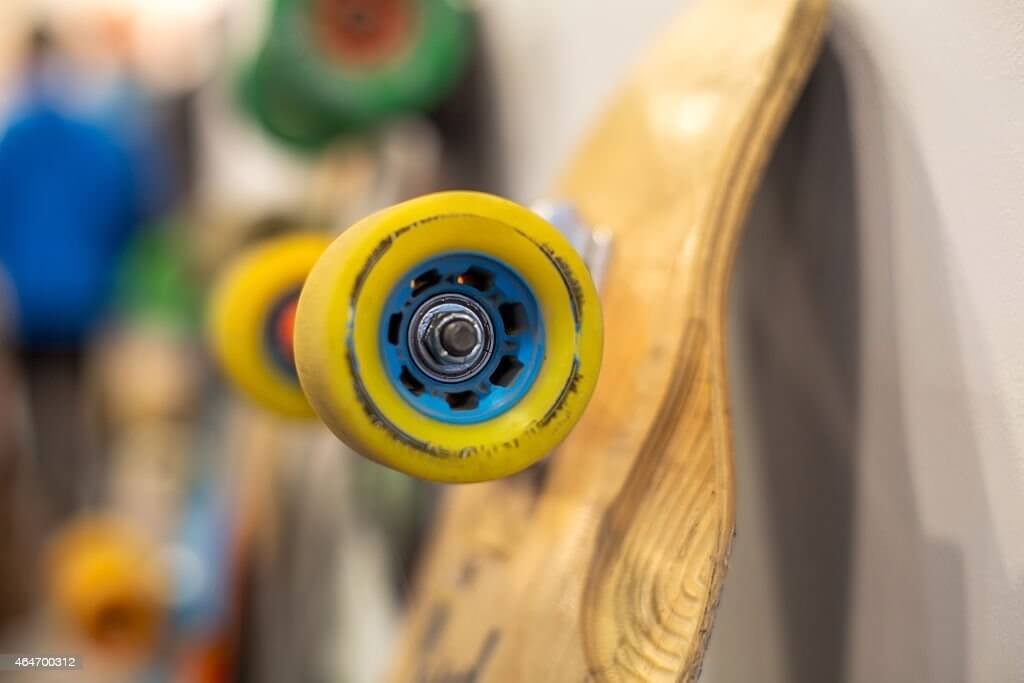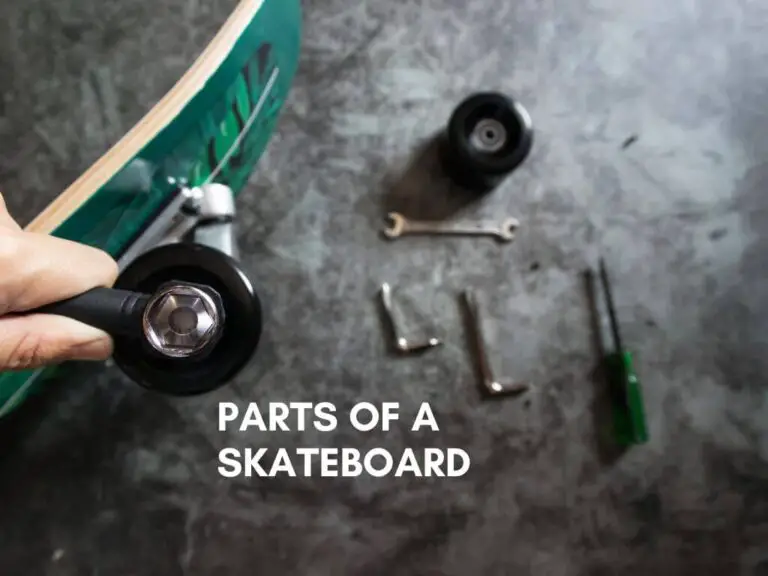Are you frustrated because your skateboard wheels feel sluggish, no matter how hard you push? You’re not alone. “Why are my skateboard wheels slow?” is a common question among skaters, whether you’re a beginner or a seasoned pro. Slow wheels can turn an exhilarating ride into a drag, leaving you wondering what’s going wrong. The good news? There are clear reasons behind this issue, and even better—solutions that can get you rolling smoothly again.
In this article, we’ll break down the top causes of slow skateboard wheels and share actionable tips to restore your board’s speed and performance. Let’s dive in and get you back to gliding like a pro!
Reason 1: Dirty or Rusty Bearings
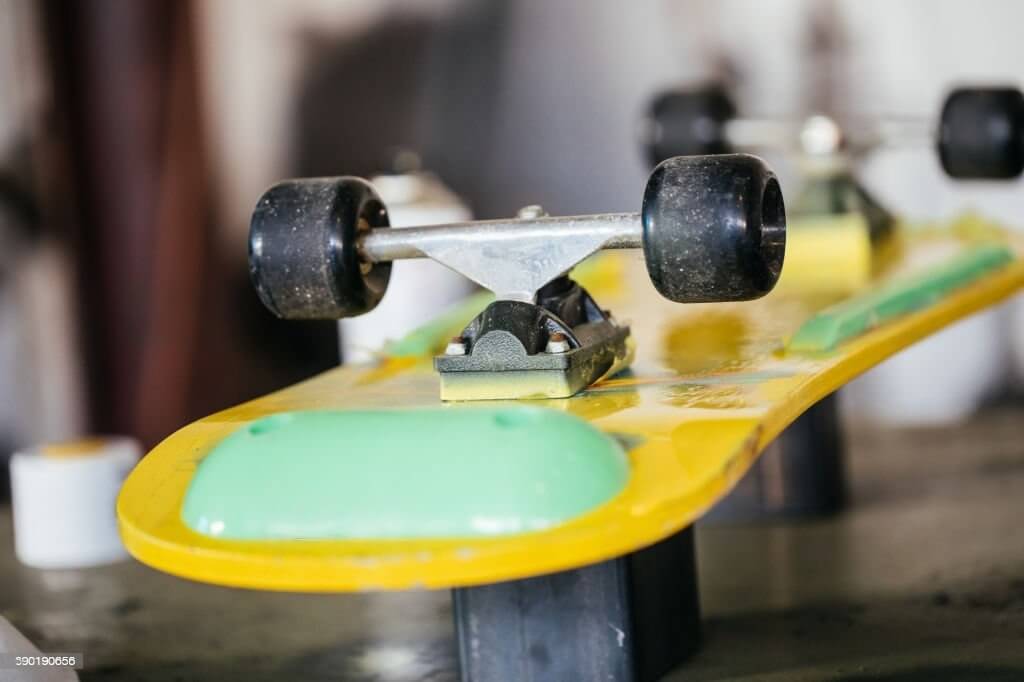
Bearings are the small metal balls that allow your skateboard wheels to spin. They are one of the most important parts of your skateboard, and they need to be kept clean and lubricated in order to function properly. If your bearings are dirty or rusty, they will not spin as freely, making your wheels slower.
There are a number of reasons why your bearings might get dirty or rusty. One reason is that they are constantly exposed to the elements, such as dirt, dust, and water. Another reason is that they can wear down over time, especially if you skate frequently.
If you notice that your skateboard is slowing down, or if you hear your bearings making a grinding noise, it’s a good sign that it’s time to clean and lubricate them.
How to clean and lubricate your skateboard bearings
There are a number of different ways to clean and lubricate your skateboard bearings, but the most common method is to use a bearing cleaner and lubricant.
To clean your bearings, you will need:
- A bearing cleaner
- A bearing lubricant
- A clean rag or paper towel
- A container for soaking your bearings
Instructions:
- Remove your bearings from your skateboard wheels.
- Place the bearings in the container and fill it with bearing cleaner.
- Soak the bearings for at least 30 minutes.
- Remove the bearings from the cleaner and rinse them thoroughly with clean water.
- Dry the bearings with the clean rag or paper towel.
- Apply a small drop of bearing lubricant to each bearing.
- Spin the bearings to distribute the lubricant evenly.
- Replace the bearings in your skateboard wheels.
Once you have cleaned and lubricated your bearings, you should notice a significant improvement in your skateboard’s speed and performance.
Tips for keeping your skateboard bearings clean and lubricated
Here are a few tips for keeping your skateboard bearings clean and lubricated:
- Clean and lubricate your bearings regularly, especially if you skate frequently.
- Avoid skating in wet or dusty conditions.
- Dry your bearings thoroughly after you skate.
- Use a bearing cover to protect your bearings from dirt and dust when you are not skating.
By following these tips, you can help to prolong the life of your skateboard bearings and keep your skateboard running smoothly.
Reason 2: Wrong wheel hardness for the surface
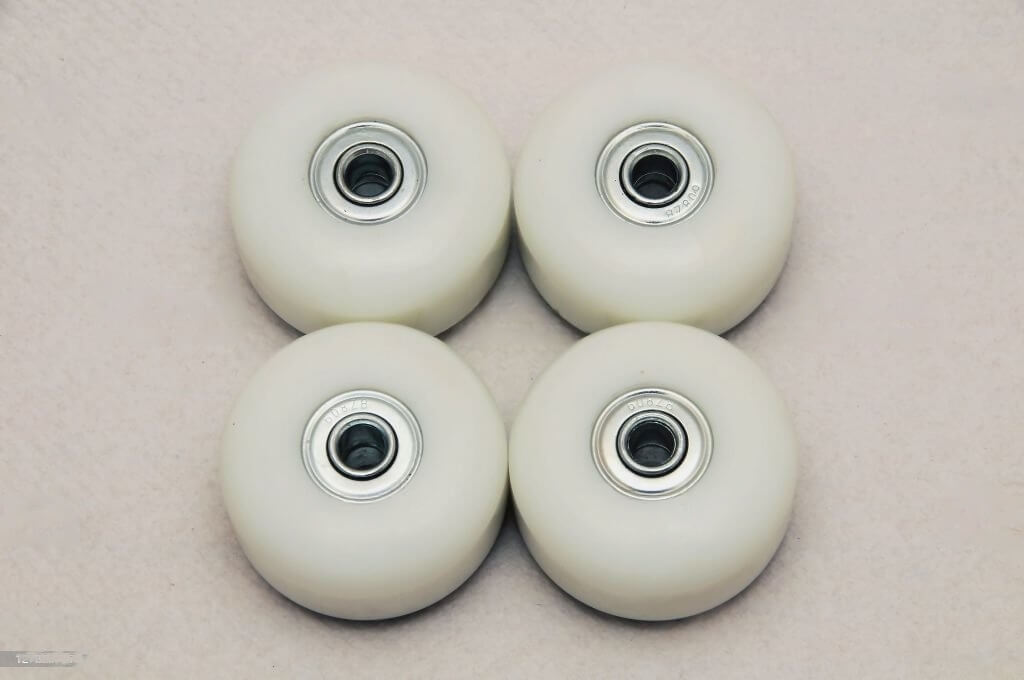
Skateboard wheel hardness is measured on the Durometer A scale, with higher numbers indicating harder wheels. Soft wheels are typically in the 78A-90A range, while hard wheels are in the 99A-104A range. Medium wheels fall in the 90A-98A range.
Wheel Hardness for Different Surfaces
- Rough surfaces (asphalt, gravel, dirt): Softer wheels (78A-90A) are best for rough surfaces because they provide more grip and absorb bumps better. Harder wheels can be slippery on rough surfaces and make for a harsh ride.
- Smooth surfaces (concrete, skateparks, indoor rinks): Harder wheels (99A-104A) are best for smooth surfaces because they are faster and have better slideability. Softer wheels can be slower and more difficult to slide on smooth surfaces.
- Medium surfaces (street skating, bowls, ramps): Medium wheels (90A-98A) are a good all-around option for a variety of surfaces. They offer a good balance of grip, speed, and durability.
Choosing the Right Wheel Hardness for Your Riding Style
In addition to the surface you are skating on, your riding style should also be considered when choosing wheel hardness. If you are a beginner or if you like to cruise around, you will want to choose softer wheels for a more comfortable ride. If you are doing tricks or skating at high speeds, you will want to choose harder wheels for more stability and control.
Here are some specific examples of wheel hardness recommendations for different riding styles and surfaces:
- Beginner: 90A-95A wheels
- Street skating: 95A-99A wheels
- Skateparks: 99A-101A wheels
- Pools and bowls: 101A-104A wheels
- Cruising: 87A-92A wheels
- Longboarding: 78A-87A wheels
How to tell if you Have the Wrong Wheel Hardness
If you are having trouble stopping or turning, or if you are slipping out on smooth surfaces, then you may have the wrong wheel hardness. If you are riding on a rough surface and your wheels are too hard, you may feel every bump and crack.
If you are unsure about what wheel hardness to choose, it is always best to consult with a skate shop employee or a more experienced skater. They can help you choose the right wheels for your riding style and the surfaces you will be skating on.
Choosing the right wheel hardness is important for a comfortable, safe, and enjoyable ride. By considering the surface you will be skating on and your riding style, you can choose the perfect wheels for your needs.
Reason 3: Worn-down wheels

Reason 3: Worn-down wheels
One of the most common reasons for a skateboard to feel slow and unresponsive is worn-down wheels. Skateboard wheels are made of polyurethane, which is a soft and durable material. However, over time, the polyurethane will wear down, making the wheels smaller and harder. This can make the skateboard slower and less responsive, and it can also make it more difficult to control the board.
There are a few things you can do to extend the lifespan of your skateboard wheels:
- Rotate your wheels regularly. This will help to ensure that they wear down evenly.
- Avoid riding on rough surfaces. Rough surfaces can cause the wheels to wear down more quickly.
- Clean your wheels regularly. This will help to remove dirt and debris that can also cause the wheels to wear down more quickly.
If your skateboard wheels are already worn down, the best thing to do is to replace them. However, if you’re on a tight budget, you can also try flipping your wheels. This means turning them around so that the fresh side is against the ground. This can give you a little extra life out of your wheels, but it’s important to note that flipping your wheels will not make them last as long as new wheels.
How to flip your skateboard wheels
To flip your skateboard wheels, you will need a skate tool. Follow these steps:
- Use your skate tool to unscrew the nuts on each axle.
- Remove the wheels and bearings.
- Turn the wheels around so that the fresh side is against the ground.
- Reinstall the bearings and wheels, and tighten the nuts.
When to replace your skateboard wheels
There is no hard and fast rule for when to replace your skateboard wheels. It depends on a number of factors, such as how often you ride, what surfaces you ride on, and how hard you skate. However, a good rule of thumb is to replace your wheels when they start to feel smaller and harder, or when they develop flat spots.
Flat spots
Flat spots are caused when the wheels wear down unevenly. This can happen if you do a lot of slides or grinds. Flat spots can make the skateboard vibrate and feel unstable.
If you have flat spots on your wheels, you can try to grind them down using a file or sandpaper. However, if the flat spots are deep, it’s best to replace the wheels.
Worn-down wheels are one of the most common reasons for a skateboard to feel slow and unresponsive. If your wheels are worn down, you can replace them or flip them. However, if the wheels have flat spots, it’s best to replace them.
Reason 4: Tight axle nuts
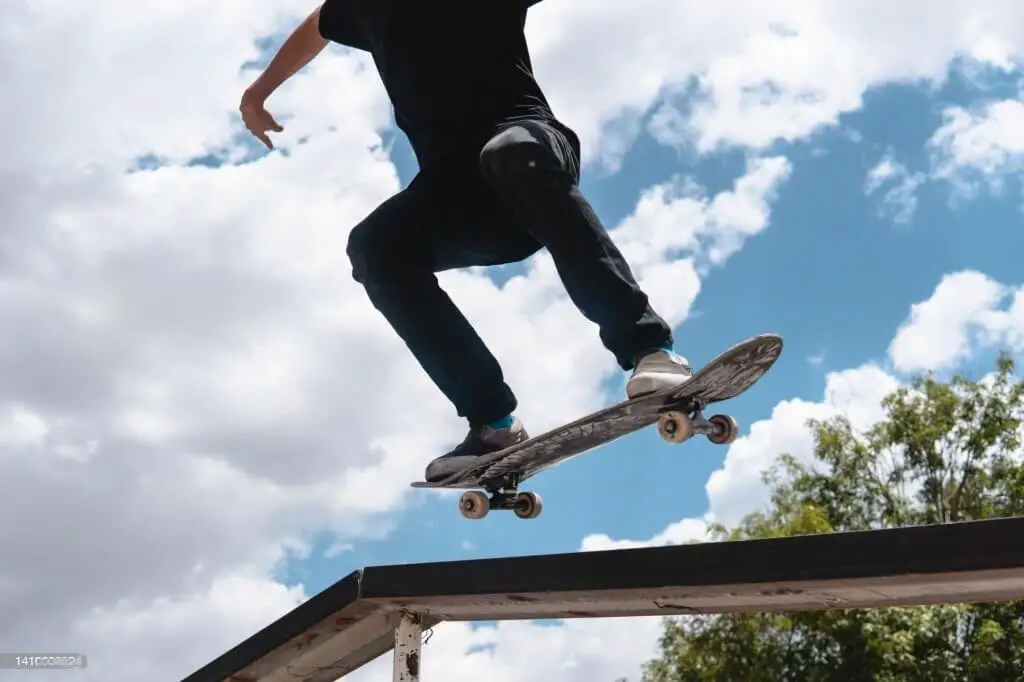
Axle nuts are responsible for holding the axle in place, and they play an important role in the performance and safety of your vehicle. When axle nuts are too tight, they can put pressure on the bearings, causing them to overheat and wear out prematurely. This can lead to a number of problems, including:
- Increased friction and resistance: Tight axle nuts can make it more difficult for the wheels to turn, which can reduce fuel efficiency and performance.
- Overheating: Tight axle nuts can cause the bearings to overheat, which can damage the lubricant and lead to premature wear.
- Noise and vibration: Tight axle nuts can cause the bearings to make noise and vibrate, which can be annoying and distracting.
- Bearing failure: In severe cases, tight axle nuts can cause the bearings to fail altogether, which can be dangerous and costly to repair.
How to tell if your axle nuts are too tight
There are a few signs that your axle nuts may be too tight:
- The wheels are difficult to turn. If you notice that it is more difficult to turn your wheels, especially when the car is cold, this could be a sign that the axle nuts are too tight.
- The bearings are hot. If you touch the bearings and they are hot to the touch, this is a sign that they are overheating and may be damaged.
- The bearings are making noise or vibrating. If you hear a noise or feel a vibration coming from the bearings, this could be a sign that the axle nuts are too tight.
- There is grease leaking from the bearings. If you see grease leaking from the bearings, this is a sign that the seals have been damaged and the bearings are not properly lubricated.
How to loosen axle nuts
If you suspect that your axle nuts are too tight, it is important to loosen them as soon as possible. To do this, you will need a torque wrench and a socket wrench that fits the size of the axle nuts.
- Park your car on a level surface and block the wheels.
- Loosen the lug nuts on the wheel that you are working on.
- Use the torque wrench to loosen the axle nuts. Be careful not to over-loosen the nuts, as this can also cause problems.
- Once the axle nuts are loose, you can remove the wheel.
- Inspect the bearings for any signs of damage. If the bearings are damaged, they will need to be replaced.
- If the bearings are in good condition, apply a generous amount of grease to the bearings and races.
- Reinstall the wheel and tighten the lug nuts.
- Use the torque wrench to tighten the axle nuts to the manufacturer’s specifications.
How to prevent axle nuts from becoming too tight
There are a few things you can do to prevent your axle nuts from becoming too tight:
- Use a torque wrench to tighten the axle nuts. This will help you to avoid over-tightening the nuts.
- Have your axle nuts checked and tightened by a qualified mechanic at regular intervals.
- Avoid using an impact wrench to tighten the axle nuts. Impact wrenches can easily over-tighten the nuts and damage the bearings.
By following these tips, you can help to ensure that your axle nuts are properly tightened and that your bearings are protected.
Reason 5: Bent axle or trucks
If your axle or trucks are bent, it can cause your wheels to turn at different speeds, which can slow you down. This is because a bent axle or truck will not be able to keep the wheel aligned properly, causing it to wobble and drag.
Symptoms of a bent axle or trucks:
- Uneven tire wear
- Difficulty steering
- Vibration in the steering wheel
- Squealing or grinding noises from the wheels
Causes of a bent axle or trucks:
- Hitting a curb or pothole
- Overloading the vehicle
- Driving on rough roads
- A manufacturing defect
Fixing a bent axle or trucks:
If you suspect that your axle or trucks are bent, it is important to have them inspected by a qualified mechanic as soon as possible. A bent axle or truck can be dangerous and can cause further damage to your vehicle if it is not repaired promptly.
In most cases, a bent axle or truck will need to be replaced. However, there are some cases where it may be possible to repair a bent axle. This will depend on the severity of the bend and the type of axle.
How to prevent bent axles and trucks:
There are a few things you can do to help prevent your axles and trucks from bending:
- Avoid hitting curbs and potholes.
- Do not overload your vehicle.
- Drive carefully on rough roads.
- Have your axles and trucks inspected regularly by a qualified mechanic.
Impact of bent axles or trucks on speed:
A bent axle or truck can significantly reduce your vehicle’s speed. This is because the bent part will cause the wheel to wobble and drag, which will increase friction and resistance. Additionally, a bent axle or truck can make it difficult to steer, which can also lead to a decrease in speed.
In some cases, a bent axle or truck can even cause your vehicle to come to a complete stop. This is because the bent part may cause the wheel to lock up or seize. If you experience this, it is important to pull over to the side of the road safely and have your vehicle towed to a mechanic.
Fuel efficiency and bent axles or trucks:
A bent axle or truck can also reduce your vehicle’s fuel efficiency. This is because the increased friction and resistance caused by the bent part will force your engine to work harder. As a result, your vehicle will burn more fuel.
Safety implications of bent axles or trucks:
A bent axle or truck can be a serious safety hazard. This is because it can make it difficult to steer and control your vehicle. Additionally, a bent axle or truck can cause your vehicle to come to a complete stop suddenly, which can increase the risk of an accident.
If you suspect that your axle or trucks are bent, it is important to have them inspected by a qualified mechanic as soon as possible. A bent axle or truck can be dangerous and can cause further damage to your vehicle if it is not repaired promptly.
Conclusion
To wrap things up, let’s recap the important stuff we’ve covered. Why Are My Skateboard Wheels Slow? Skateboard wheel speed isn’t as simple as it might seem – it’s a mix of many puzzle pieces. Friction, wheel size, hardness, and bearing quality are the players in this game, and they all team up to define how fast and smooth your ride is.
Remember, these factors are buddies, not loners. They chat and influence each other, affecting how your wheels spin. So, before you hit the streets or ramps, take a moment to think about your setup. Could a different wheel size make you zip faster? Is your hardness too hard for the surfaces you’re skating on? And don’t forget those bearings – they matter more than you might think.
FAQ’s
Why Are My Bearings Slow?
If your bearings on the skateboard are going slow, there could be a couple of reasons. Sometimes, they might need a bit of time to work smoothly because they’re new. Or they could be dirty, which makes them slow down. If you don’t use your skateboard much, the bearings might also get a bit stuck. Taking care of them by cleaning and maybe adding a bit of oil can help them go faster again. Just like a bike chain needs oil to move well, bearings need a bit of care too!
Why are my new skateboard bearings slow?
If your new skateboard bearings are moving slowly, it could be because they need a bit of time to get used to moving smoothly. Sometimes, new bearings have a thin layer that needs to wear off so they can spin better. Also, they might have some factory grease that’s making them slow, so cleaning and adding a little skateboard oil can help them work better. Give them a little time and care, and they should start spinning faster soon!
How long should your skateboard wheels spin?
Your skateboard wheels should spin for a good amount of time when you give them a push and let them go. If they stop quickly, it might be because of dirt or something else that’s slowing them down. It’s good if they keep spinning for a while because that helps your skateboard move smoothly and go faster. If they stop too fast, you might want to clean or take a look at them to make sure everything is working nicely.
Why does my skateboard feel so slow?
Your skateboard might feel slow because there could be a few reasons. First, the wheels might be dirty or not rolling smoothly. You can clean them to make them spin better. Second, the ground you’re riding on might be rough or bumpy, which can slow you down. Lastly, if your skateboard is old, the bearings might need oiling or replacing. Try these things to make your skateboard feel faster!
What Do You Need To Make A Skateboard Faster?
To make your skateboard go faster, you can try smoother and harder wheels. Bearings, the parts inside the wheels, should be clean or replaced if old. Keeping the board clean and well-maintained helps too. Remember, safety first!
Why Is My Skateboard So Loud And Slow?
Your skateboard could be making noise and moving slowly because the wheels might be rough or broken, causing sound and slowing you down. Dirt and stuff on the wheels could also be making it hard to go fast. Cleaning and taking care of your skateboard can help make it quieter and faster again.
What Affects The Speed Of A Skateboard?
The speed of a skateboard is influenced by factors like surface smoothness, wheel size, bearings quality, and how fast you push. Smooth surfaces and larger wheels roll faster. Good bearings reduce friction, and pushing harder makes you go quicker.
How Do I Make My Skateboard Faster?
To make your skateboard faster, you can clean its wheels and bearings. Keep the moving parts free from dirt and rust. Also, use good-quality lubricants to help it roll smoother. Smooth roads or paths can help you pick up speed. And don’t forget, practice and push with your foot firmly for more speed!
How Do You Fix A Slow Skateboard?
Clean and oil the small parts (bearings) that help the wheels spin.
Use smoother wheels for quicker rides.
Check if the wheels are worn or damaged, then replace if needed.
Make sure the skateboard isn’t too loose or tight.
Choose a smooth surface for riding.

